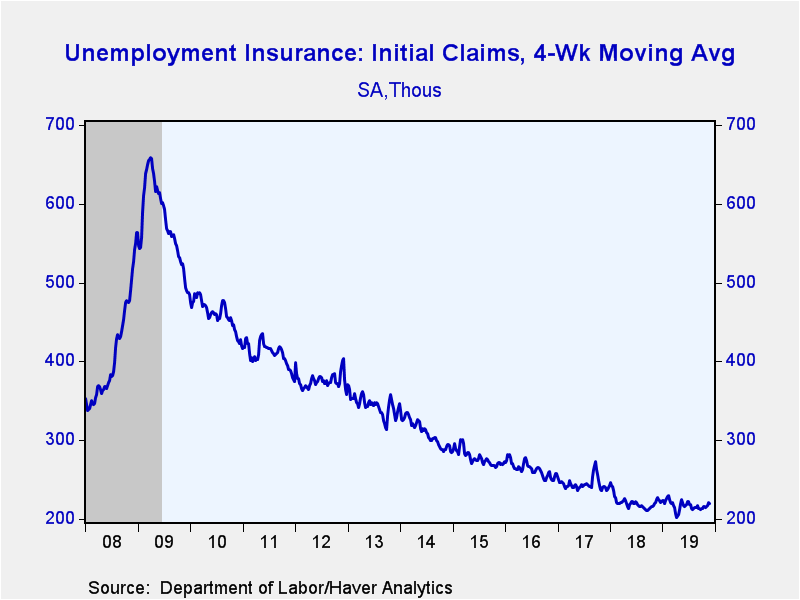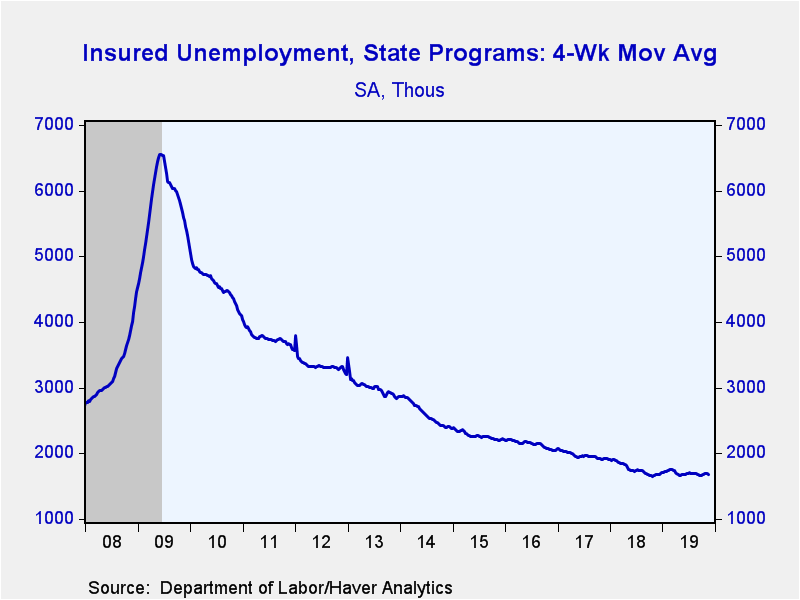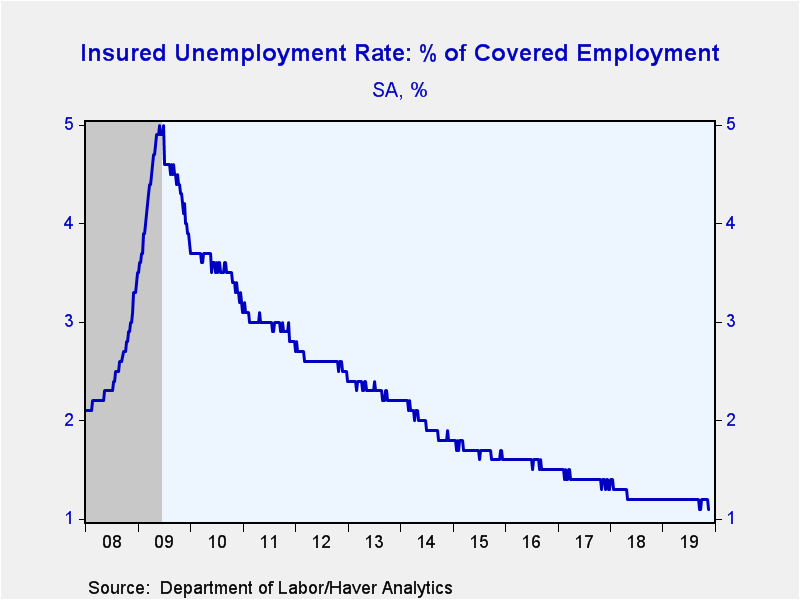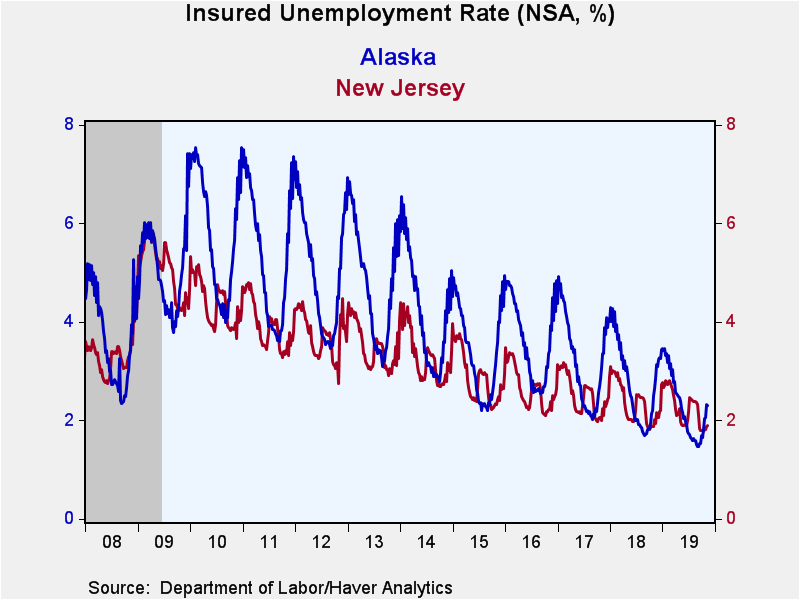 Global| Nov 27 2019
Global| Nov 27 2019U.S. Initial Claims for Unemployment Insurance Decline, Continuing Claims Fall to 46-Year Low; Holiday Timing May [...]
Summary
Initial claims for unemployment insurance declined 15,000 to 213,000 (-9.0% year-on-year) during the week ending November 23. The previous week was revised slightly higher to 228,000 (was 227,000). The late Thanksgiving holiday may [...]
Initial claims for unemployment insurance declined 15,000 to 213,000 (-9.0% year-on-year) during the week ending November 23. The previous week was revised slightly higher to 228,000 (was 227,000). The late Thanksgiving holiday may have played a role in the seasonally-adjusted decrease, though we will know more in a few weeks. The Action Economics Forecast Survey expected 221,000 claims. The four-week moving average of initial claims edged down to 219,750 after reaching a five-month high last week.
Continuing claims for unemployment insurance fell 57,000 to 1.640 million (-3.2% y/y) in the week ending November 16, from a slightly-upwardly revised 1.697 million. This is the lowest level of continuing claims since August 1973. However, as noted above, the timing of Thanksgiving may have played a role in the drop. The four-week moving average of claimants declined to 1.681 million from 1.694 million.
The insured rate of unemployment decreased to 1.1%, matching the record low reached in September. Data on the insured unemployment rate go back to 1971.
Insured rates of unemployment vary widely by state. During the week ending November 9, the lowest rates were in Nebraska (0.2%), South Dakota (0.2%), Florida (0.4%), Utah (0.4%), and North Carolina (0.4%). The highest rates were in Pennsylvania (1.5%), Connecticut (1.6%), California (1.7%), New Jersey (1.9%), and Alaska (2.3%). Among the other largest states by population not mentioned above the rate was 0.9% in Texas, and 1.2% in New York. This data is only reported to one decimal place, as opposed to standard two, because the holiday-driven early data release. These state data are not seasonally adjusted, thus Alaska has particularly large seasonal swings in insured rates of unemployment.
Data on weekly unemployment claims going back to 1967 are contained in Haver's WEEKLY database, and they are summarized monthly in USECON. Data for individual states are in REGIONW. The expectations figure is from the Action Economics Forecast Survey, carried in the AS1REPNA database.
| Unemployment Insurance (SA, 000s) | 11/23/19 | 11/16/19 | 11/09/19 | Y/Y % | 2018 | 2017 | 2016 |
|---|---|---|---|---|---|---|---|
| Initial Claims | 213 | 228 | 227 | -9.0 | 220 | 244 | 262 |
| Continuing Claims | -- | 1,640 | 1,697 | -3.2 | 1,756 | 1,961 | 2,135 |
| Insured Unemployment Rate (%) | -- | 1.1 | 1.2 |
1.2 |
1.2 | 1.4 | 1.6 |
Gerald D. Cohen
AuthorMore in Author Profile »Gerald Cohen provides strategic vision and leadership of the translational economic research and policy initiatives at the Kenan Institute of Private Enterprise.
He has worked in both the public and private sectors focusing on the intersection between financial markets and economic fundamentals. He was a Senior Economist at Haver Analytics from January 2019 to February 2021. During the Obama Administration Gerald was Deputy Assistant Secretary for Macroeconomic Analysis at the U.S. Department of Treasury where he helped formulate and evaluate the impact of policy proposals on the U.S. economy. Prior to Treasury, he co-managed a global macro fund at Ziff Brothers Investments.
Gerald holds a bachelor’s of science from the Massachusetts Institute of Technology and a Ph.D. in Economics from Harvard University and is a contributing author to 30-Second Money as well as a co-author of Political Cycles and the Macroeconomy.









